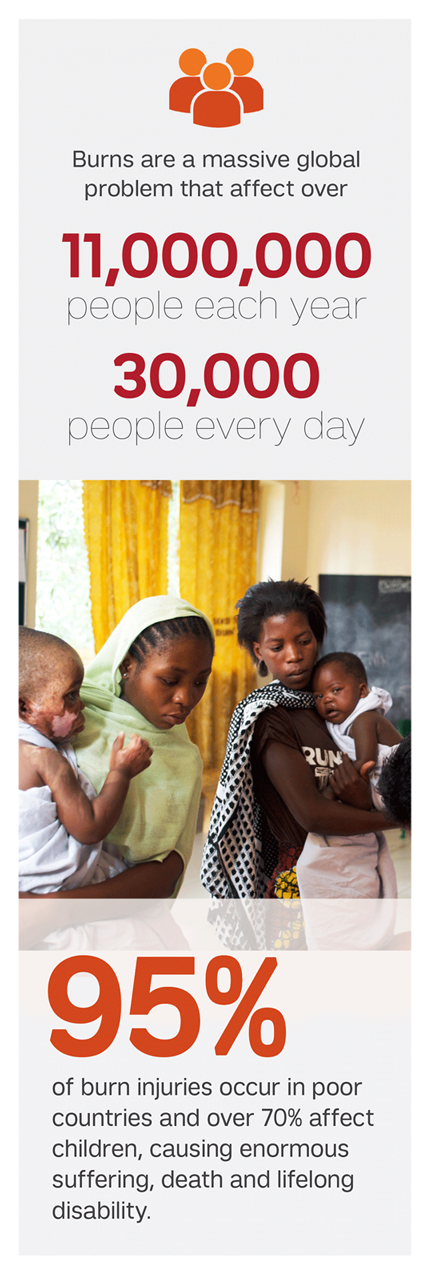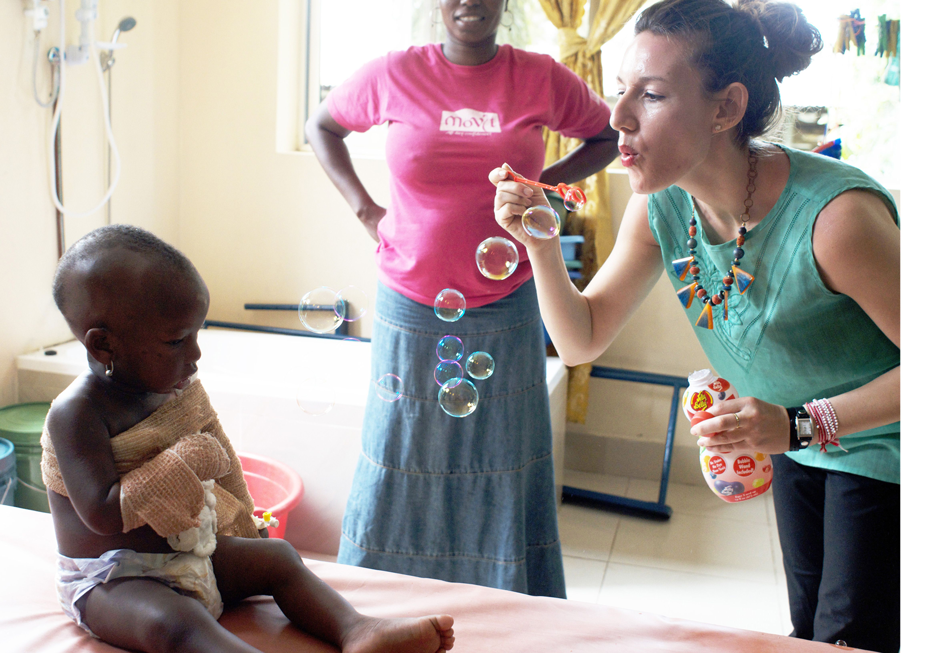
Burns have long tormented humankind with pain, disability, and disfigurement. Some burns may also lead to death. In countries with high incomes, advances in burn prevention efforts as well as medical care have reduced the incidence of injury and death. Improved care has enabled better functional and cosmetic results of medical treatment. In countries with low incomes, however, burns remain a major scourge. They occur more frequently, lead to more death, disability, and inflict more pain and misery. Children are often the most affected.
The Opportunity

In 2003 under the leadership of Sanford Weill and Antonio Gotto, Weill Cornell Medical College (now Weill Cornell Medicine) developed an institutional academic partnership with the Bugando Medical Center in Mwanza, Tanzania, as part of its program in Global Health. Mwanza is in the Northwest region of Tanzania and has a rural, low-income population of 9 million people. The purpose of that partnership was both to find ways to help to improve the medical care available to the local population, and also to provide opportunities for students and faculty from Weill Medical College to study and learn about diseases prevalent in East Africa.
At the Weill Cornell Medical Center (a partnership between Weill Cornell Medicine and New York Presbyterian Hospital), the William Randolph Hearst Burn Center has served New York City since 1976. It is one of the premier burn centers in the world and cares for 800 inpatients per year and 4,000 outpatients. It is the only burn center in New York City that is verified as meeting the standards of excellence in burn care set by both the American College of Surgeons and the American Burn Association. It has held that distinction since 2006.
The opportunity is to combine the expertise of the Hearst Burn Center in New York and the presence of Weill Cornell Medicine in the Bugando Medical Center to develop the capability to provide competent, timely and effective burn care in Mwanza and so reduce the pain and disability from burns in that region of East Africa.
Future Directions
- Continue to provide periodic burn education for the staffs at both burn centers.
- Promote burn quality improvement initiatives and research at both adult and pediatric burn centers.
- Develop community outreach programs at both adult and pediatric burn centers to promote burn prevention efforts and assist patient re-integration following burn treatment.
- In partnership with other regional hospitals and the Tanzanian Health Ministry assist in developing burn care capabilities throughout Tanzania.
- Fasciliate participation in the World Health Organization’s Global Burn Registry to provide data that is necessary for future resource allocation toward burn care.
- Develop relationships with other burn programs on the African continent through the participation and membership in the Pan-African Burn Association.
Accomplishments To Date
A major assumption of this project has been that to be effective and sustainable, local health-care professionals must have a major role in and ownership of any burn care capability that is developed. So far, that assumption is correct.
In 2011 a team from the Hearst Burn Center went to Mwanza to assess the status of burn care there and to conduct a needs assessment for enhancing the capability to provide modern, effective burn care for children and adults. Over the ensuing years multi-disciplinary teams of surgeons, nurses, and therapists from New York provided on-site didactic and bedside teaching for local health-care professionals. A grant from the ELMA Foundation provided funds to acquire specialized surgical instruments necessary for timely, basic contemporary burn surgery for those injuries that required it.
A Pediatric Burn Center opened in 2013 at the Sekou Touré hospital, after just a modest investment for equipment and training. It was staffed entirely with local health-care professionals. Then a larger burn center that cared for both children and adults and with more capacity for surgical care opened at Bugando Medical Center in 2015. Today, these two burn units work collaboratively to serve their community. Burn care has been established, patients can recover from their burns, maintain good physical function, and get back to their lives. The pain, disability, and suffering they endured is less. This success is a result of Weill Cornell Medicine expertise combined with the dedication of the local burn team to provide competent, timely and effective burn care for their community.

Donate Now
Our experience demonstrates that improving the treatment of burn patients in resource strained areas in a sustainable way can be a low-cost, satisfying, and high yield investment. We hope you will consider joining our effort by giving.
If you are interested in supporting the Weill Cornell Medicine African Burn Care Development Education Fund, BurnED, please contact us via email at traumaandburns@med.cornell.edu or donate online here.

